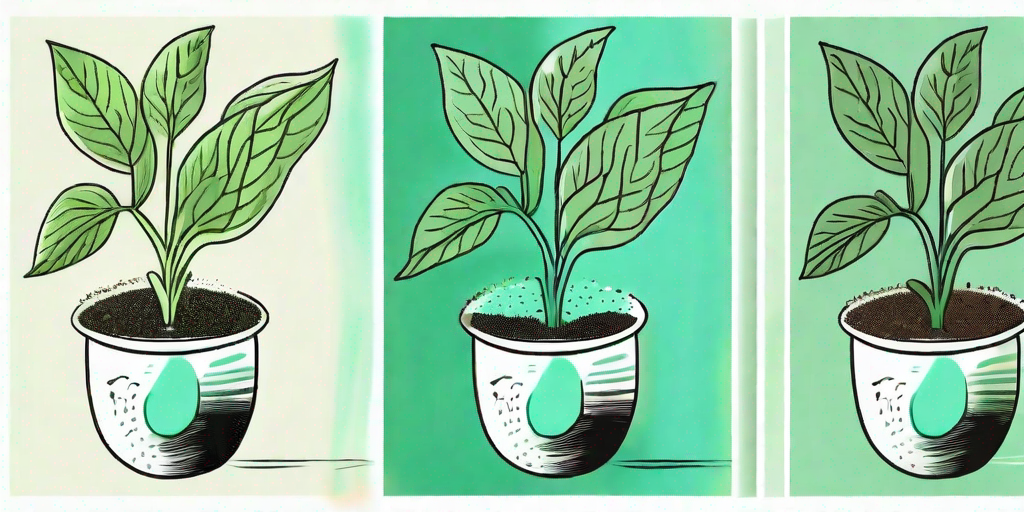
Welcome to the world of chia, the tiny but mighty superfood that's been making waves in the health and wellness industry. If you're a health enthusiast who's been looking for a new project, why not consider growing your own chia plants? It's easier than you might think, and the rewards are plentiful. So, put on your gardening gloves, and let's dive into the nitty-gritty of chia cultivation.
The Chia Plant: A Brief Introduction
Before we get our hands dirty, let's take a moment to appreciate the chia plant. Native to Mexico and Guatemala, chia (Salvia hispanica) is a member of the mint family. It's a hardy plant that can grow in various climates, making it a suitable choice for novice and experienced gardeners alike.
The chia plant is best known for its seeds, which are packed with nutrients like omega-3 fatty acids, fiber, protein, and antioxidants. But did you know that the leaves are also edible? They have a mild flavor and can be used in salads or as a garnish. Now, that's what we call a versatile plant!
Getting Started with Chia Cultivation
Choosing the Right Spot
Your chia plants will need a sunny spot to thrive. They prefer full sun but can tolerate partial shade. As for soil, chia plants aren't too picky. They can grow in sandy, loamy, or clay soils, as long as the soil drains well. If you're planting chia in a pot, make sure it has drainage holes to prevent waterlogging.
When it comes to spacing, chia plants like their personal space. Aim for a distance of about 12 to 18 inches between each plant. This will give them plenty of room to spread out and grow.
Planting the Seeds
Chia seeds are tiny, but don't let their size fool you. These little guys are full of life and ready to sprout. To plant chia seeds, simply scatter them over the soil and lightly cover them with a layer of soil or compost. Water the area well, and wait for the magic to happen.
Chia seeds usually germinate within one to two weeks. Once the seedlings are about three inches tall, thin them out to ensure proper spacing. Remember, chia plants are social distancers by nature!
Caring for Your Chia Plants
Watering and Feeding
Chia plants are quite drought-tolerant, but they'll appreciate regular watering, especially during dry spells. Try to keep the soil moist but not waterlogged. Overwatering can lead to root rot, which is as nasty as it sounds.
As for feeding, chia plants don't require much. A layer of compost or organic matter at planting time should provide enough nutrients for the growing season. If your soil is poor, you might consider adding a slow-release organic fertilizer.
Dealing with Pests and Diseases
Chia plants are generally pest-resistant, but they can occasionally attract aphids or whiteflies. If you notice these pesky critters, a blast of water or an application of insecticidal soap should send them packing. As for diseases, chia plants are susceptible to root rot if overwatered, so be mindful of your watering habits.
One more thing to keep in mind: chia plants can self-seed and become invasive in some areas. To prevent this, simply remove the flower heads before they set seed.
Harvesting and Using Chia Seeds
Harvesting chia seeds is a cinch. Once the flower heads have dried, simply cut them off and shake the seeds into a bag or container. Store the seeds in a cool, dry place, and they should keep for several years.
Now for the fun part: using your homegrown chia seeds! You can sprinkle them on salads, stir them into yogurt, or use them to make chia pudding. The possibilities are endless, and the nutritional benefits are through the roof.
Frequently Asked Questions
- Can I grow chia plants indoors?
Yes, you can grow chia plants indoors, but they'll need plenty of light. A south-facing window is ideal. If you don't have enough natural light, you might need to use a grow light.
- How long does it take for chia plants to produce seeds?
Chia plants usually start producing seeds about three months after planting.
- Can I eat chia leaves?
Yes, chia leaves are edible and can be used in salads or as a garnish. They have a mild flavor.
Conclusion
So, there you have it, folks. Growing your own chia plants is a rewarding project that's not only good for your health but also good for your green thumb. It's time to get planting and start reaping the benefits of this superfood. Happy gardening!











